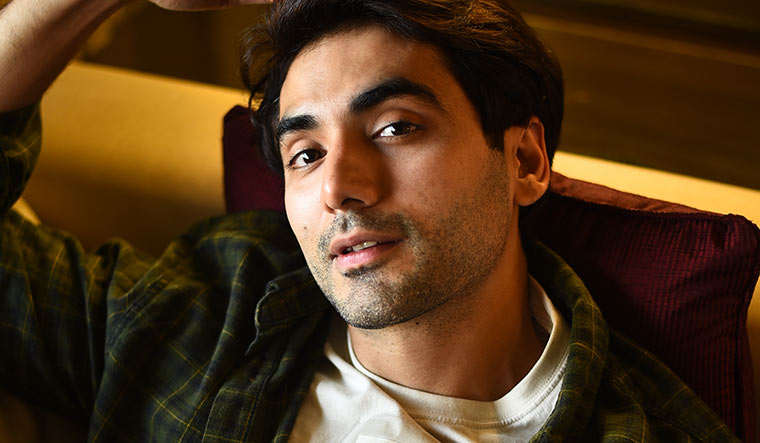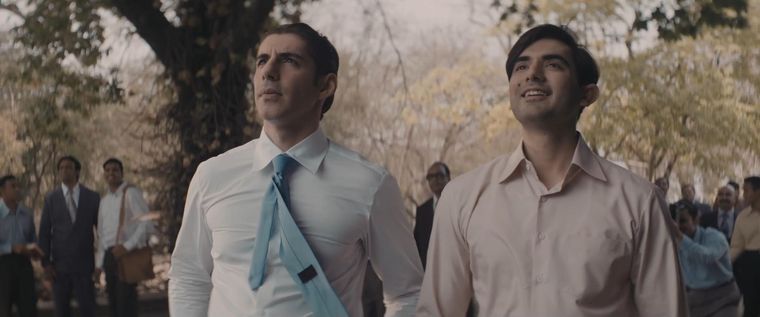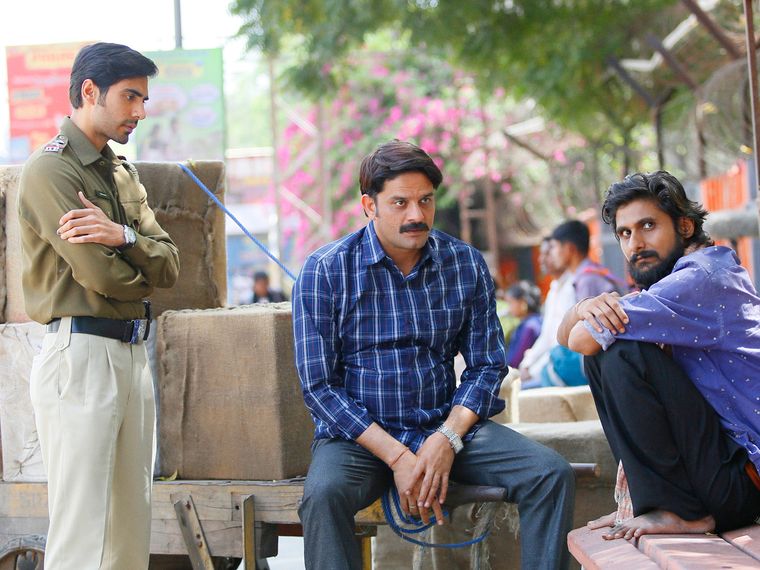Beneath his still rising star, Ishwak Singh is equal parts a lover of poetry and philosophy, as he is of architecture and books. And a romantic. But we shall return to that.
Currently basking in the success of Rocket Boys 2 (Sony LIV)―a series in which he plays Dr Vikram Sarabhai, the father of India’s space research programme―Singh has an innate gentleness to him. Much like the character he plays. That gentleness, though, hides a steely determination. As it does the aching need to find one’s voice.
Though he has been on screen since 2013 (Raanjhanaa), Singh, 38, first gripped our consciousness in Paatal Lok (2020), with a role that made him navigate what it means to be a Muslim in these times. The common thread between that character and Sarabhai in Rocket Boys is idealism.
Is he an idealist in real life, too? “It is difficult to encapsulate a character in absolute terms,” he says. “To me, they were honourable men doing their work with great seriousness. I saw Imran Ansari (Paatal Lok) as a good cop, but there were many layers to him. Dr Sarabhai’s world was so large and diverse that it is difficult to condense it in a word. But his edifice was that he was a man of science.”
That edifice became the one-note concept that drove Singh through the role. “Whenever at a crossroads, he took decisions based on science,” he says. “That became my motivation whenever I had to make a choice about how to approach a scene.”
In a country where there is endless debate about pumping crores of rupees into space research amid hunger and illness, Singh sees Sarabhai as a scientist with “beliefs”, which in turn drove his priorities. “He wanted to address the need of the hour… [and] not do things in a manner where personal ambition could harm or overshadow society,” he says. “He was not about crash course technology, where you get what you want at whatever cost. He was all about nurturing and growing things slowly for development.”
Singh’s preparation for the role included reading up on particle physics, being awed by bosons (subatomic particles) and understanding the politics behind the making of an atom bomb. It helped that he had studied science; though in college he had veered towards architecture.
While preparing for Paatal Lok, he had met numerous policemen. But, for Rocket Boys, because of the pandemic, he could not visit the many places that were part of Sarabhai’s universe. What he saw initially as a handicap, though, turned into a strength as he dived into books to delve into the character. Besides the heavy reading, he also picked up authors like R.K. Narayan to understand the kind of literature that Sarabhai would have read, and went through articles from that time to understand what being an Ahmedabadi in that age meant. Thus, when filming started, he came with a deep knowledge of his character and his context.
One of the show’s greatest hooks is the intellectual and ideological chemistry between Homi J. Bhabha (played by Jim Sarbh) and Sarabhai. As in the show, so in real life, both men come across as completely different. “Jim’s preparation might not have included reading the books that I read, but he would perhaps have read deeper into the script. We brought our different world views, upbringings, cultures and experiences to the set. The end goal was the same… to create harmony from our differences, to carve out from one edifice. That is how magic happens.”
Singh’s pursuit of his “voice” remains at the core of his strivings.
It is a pursuit helped by the directors and co-actors whom he has worked with, those who have never tried to push a square peg into a round hole. “My years in theatre and then on screen make me realise that we are all very different, yet we all must adjust to make space for all kinds of outlooks,” he says. “All the while being honest and believable in the roles that we are essaying. Metaphorically, you have to remain true to yourself, to find out what works for you and yet arrive at the same point as those you are working with.”
As a theatre artist, Singh has also collaborated twice (2010 and 2013) with the Darpana Academy of Performing Arts, founded by Sarabhai and his wife, Mrinalini. He fondly recalls its artistes, whom he keeps in touch with, “almost like family”.
Singh funnels his knowledge of architecture into his work―equating form with aesthetics and function with content; building in construction and deconstruction into his approach to characters. “Architecture creates physical spaces,” he says. “We create cultural spaces. Both have influences at a psychological and historical level. My style in both is going beyond the four walls, looking beyond what exists. In both you go down a rabbit hole, to the bottom of the ocean floor and create something new.”
The journey between Raanjhanaa and Paatal Lok might seem long, but Singh kept doing theatre―mainly with the Delhi-based Asmita Theatre Group―playing roles across genres. The hundreds of productions he has been part of include Court Martial (which explores justice against the backdrop of caste bias in the Army) and Moteram Ka Satyagrah (a socio-political commentary). He credits Asmita’s founder Arvind Gaur for always creating work for all group members.
“I was constantly working and learning. The motivation also came from the fact that I was growing―from one scene to two, and then to six,” he says. So, what might seem like an arduous climb to some became his “treasure”.
Singh’s social media gives a glimpse into his love for music―a diverse range from Pearl Jam to Tupac Shakur to Sufi music. His reading list, besides poetry, includes any prose that reads like poetry.
Small wonder then that one of his favourite books is Maps for Lost Lovers (Nadeem Aslam). He chanced upon it while researching for a character. He says that in his mind he is always making maps―of intangible lines that would lead to places where his soul is. That, and repeatedly listening to Dhoop Kinara (Faiz Ahmad Faiz).
“What can be more romantic than that?” he asks.
What, indeed.




